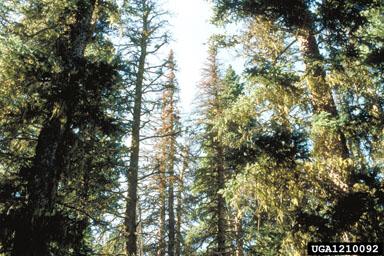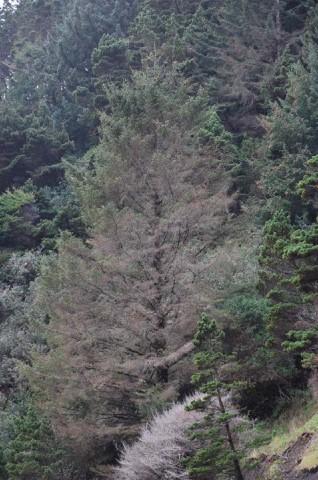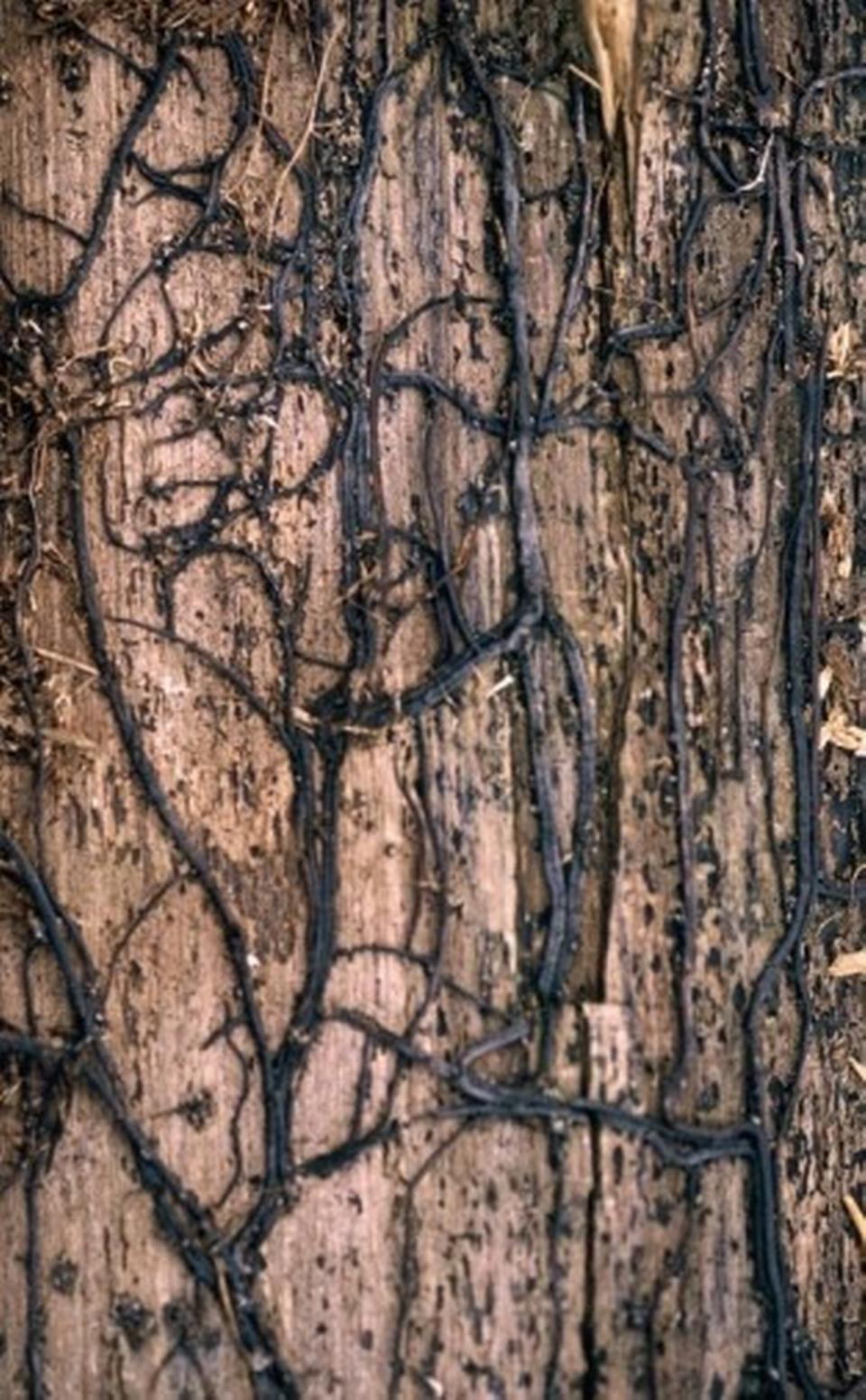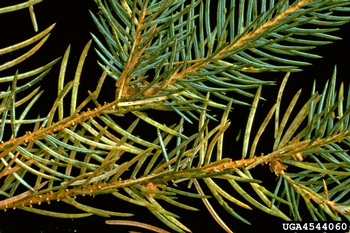Sitka Spruce (Picea sitchensis) Diagnostic Tables
Crown and Needle Symptoms
|
Symptom |
Possible Causes |
Visual |
|
Crown yellowing, often with top-down decline and distress crop |
||
|
Defoliation and yellowing of older needles. Older trees will be towards the lower crown, young trees near the top |
||
|
Crown Dieback and defoliation of needles leading towards eventual death |
Example of Heterobasidion Root Disease on Pines (spruce example coming soon) |
Trunk and Branch Symptoms
|
Symptom |
Possible Causes |
Visual |
|
Butt swelling on older trees, presence of brown rot in heartwood when cored, presence of velvety, brownish layers of cushion-like fruiting bodies at base of tree or on lower trunk |
Velvet polypore/Dyer’s polypore (Phaeolus schweinitzii)
|
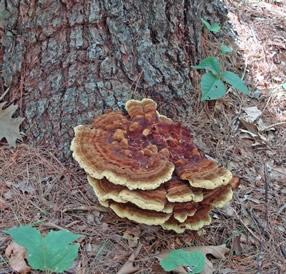
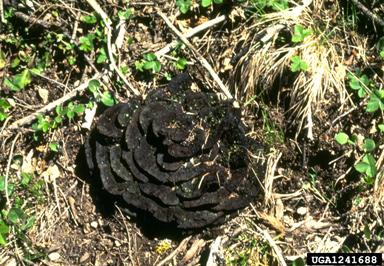
|
|
Black shoestring-like cords and white fans of fungal tissue running up the first few meters of the trunk (under bark), sometimes resin bleeds near base of tree, possible presence of epicormic sprouts |
|
|
|
Yellowing needles with branch defoliation and dieback of older needles AND/OR Dead or dying older needles covered in sooty mold, not affecting new growth |
|
Root and Ground-level Symptoms
|
Symptom |
Possible Causes |
Visual |
|
Medium to large velvety, brownish (lighter on margins when fresh) layers of cushion-like fruiting bodies at or near base of tree or on lower trunk |


|
|
|
Clusters of tannish mushrooms present at the base or near trees, stringy yellowish to white rot with hard black plates present in the roots and lower trunk of downed trees |
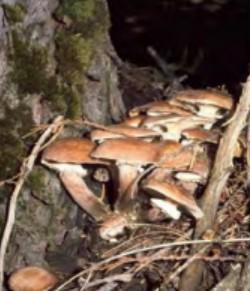
|
|
|
Laminated or stringy white rot with oval pits or black flecks in decayed areas
AND/OR
Presence of hard, small, white fruiting bodies near root collar
AND/OR
Fully-developed flat to bracket-like fruiting bodies in or on nearby stumps and snags. Mature fruiting bodies hard, brown with white margin on top and white to faintly orangish below with irregularly shaped pores |


|

